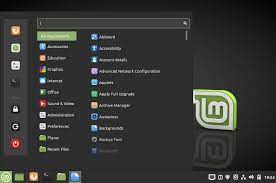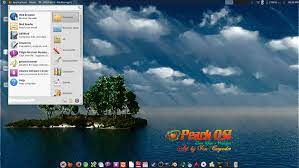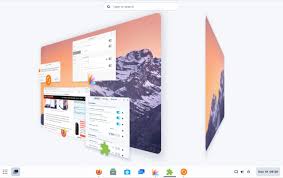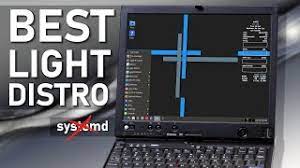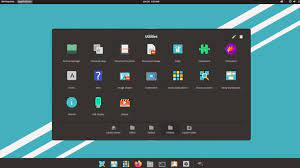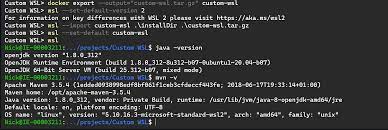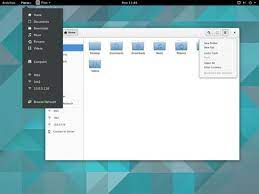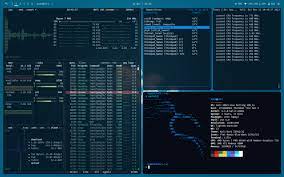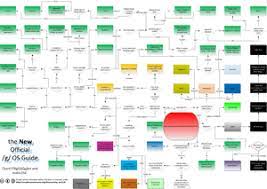Unveiling the Finest Linux Flavours: A Guide to Finding the Best Distribution
The Best Linux Flavour: A Guide to Choosing the Right Distribution
Linux, as an open-source operating system, offers a wide range of distributions, each tailored to different user needs and preferences. With so many options available, it can be overwhelming to decide which Linux flavour is best suited for you. In this article, we will explore some of the most popular and well-regarded Linux distributions, helping you make an informed choice.
Ubuntu
Ubuntu is one of the most widely used Linux distributions and is known for its user-friendly interface and extensive community support. It offers a stable and secure environment suitable for both beginners and advanced users. Ubuntu’s software repository provides a vast selection of applications, making it easy to find and install the software you need.
Linux Mint
If you are looking for a distribution that prioritizes simplicity and elegance, Linux Mint might be the right choice for you. Built on top of Ubuntu, it offers a polished desktop environment with a familiar layout that resembles Windows. Linux Mint focuses on providing a hassle-free experience by including multimedia codecs and proprietary drivers out-of-the-box.
Fedora
Fedora is a cutting-edge distribution that emphasizes innovation and the latest features. It serves as a testing ground for technologies that may eventually make their way into other distributions. Fedora is well-suited for developers and enthusiasts who want to stay at the forefront of Linux advancements while enjoying stability.
Debian
Debian is renowned for its stability, security, and commitment to free software principles. It has one of the largest software repositories available, ensuring a vast range of applications to choose from. Debian is often preferred by experienced users who appreciate its reliability and extensive customization options.
Arch Linux
Arch Linux is a distribution designed for users who enjoy building their system from the ground up. It provides a minimal base installation and allows users to customize every aspect according to their preferences. Arch Linux offers a rolling release model, ensuring that you are always up-to-date with the latest software versions.
Conclusion
Choosing the best Linux flavour ultimately depends on your specific needs and preferences. Ubuntu and Linux Mint are excellent choices for beginners, offering user-friendly interfaces and extensive community support. Fedora appeals to those who value cutting-edge technologies, while Debian provides stability and security. For advanced users seeking complete customization, Arch Linux is an ideal option.
Consider experimenting with different distributions by trying them out in live environments or virtual machines before committing to one. Remember that the beauty of Linux lies in its diversity, allowing you to find the perfect flavour that suits your unique requirements.
Top 5 FAQs: Choosing the Ideal Linux Distribution for Beginners, Gaming, Stability, and Customisation
- Which is the best Linux flavour for beginners?
- What is the most user-friendly Linux distribution?
- Which Linux flavour is best for gaming?
- What is the most stable Linux distribution?
- Which Linux flavour offers the most customization options?
Which is the best Linux flavour for beginners?
When it comes to choosing the best Linux flavour for beginners, Ubuntu often emerges as a top recommendation. With its user-friendly interface, extensive documentation, and a supportive community, Ubuntu provides a smooth transition for those new to Linux. Its software repository offers a vast selection of applications, making it easy for beginners to find and install the software they need. Additionally, Ubuntu’s focus on stability and security ensures a reliable experience for users who are just starting their Linux journey.
What is the most user-friendly Linux distribution?
When it comes to user-friendliness, Ubuntu stands out as one of the most popular and highly regarded Linux distributions. With its intuitive interface and extensive community support, Ubuntu offers a seamless experience for both beginners and advanced users. Its software repository provides a vast selection of applications, making it easy to find and install the software you need. Additionally, Ubuntu’s commitment to regular updates ensures that you have access to the latest features and security patches. Whether you are new to Linux or have been using it for years, Ubuntu’s user-friendly design makes it an excellent choice for those seeking a hassle-free and enjoyable computing experience.
Which Linux flavour is best for gaming?
When it comes to gaming on Linux, there are a few distributions that stand out for their compatibility and performance. One of the most popular choices among gamers is Ubuntu, thanks to its extensive support, user-friendly interface, and compatibility with a wide range of games. Another excellent option is Pop!_OS, which is specifically designed for gaming and offers a streamlined experience with optimized graphics drivers. For those seeking bleeding-edge performance, Manjaro Linux provides access to the latest gaming technologies and software updates. Ultimately, the best Linux flavour for gaming depends on personal preferences and hardware compatibility, so it’s worth exploring different distributions to find the one that suits your gaming needs best.
What is the most stable Linux distribution?
When it comes to stability, Debian is often regarded as one of the most reliable Linux distributions available. With a strong focus on security and a rigorous testing process, Debian ensures that its releases are thoroughly vetted for stability before being made available to users. Its commitment to using well-established software versions and its extensive package management system contribute to its reputation for providing a solid and dependable operating system. Whether you are a server administrator or simply seeking a stable desktop environment, Debian is a popular choice for those who value reliability above all else in their Linux distribution.
Which Linux flavour offers the most customization options?
When it comes to customization options, Arch Linux stands out as the Linux flavour that offers the most flexibility and control. Built on the philosophy of “do-it-yourself,” Arch Linux provides a minimal base installation, allowing users to build their system from scratch according to their specific preferences. With Arch Linux, you have complete control over every aspect of your operating system, from the choice of desktop environment to the selection of individual software components. This level of customization empowers advanced users and enthusiasts to create a tailored and optimized Linux experience that perfectly fits their needs.



